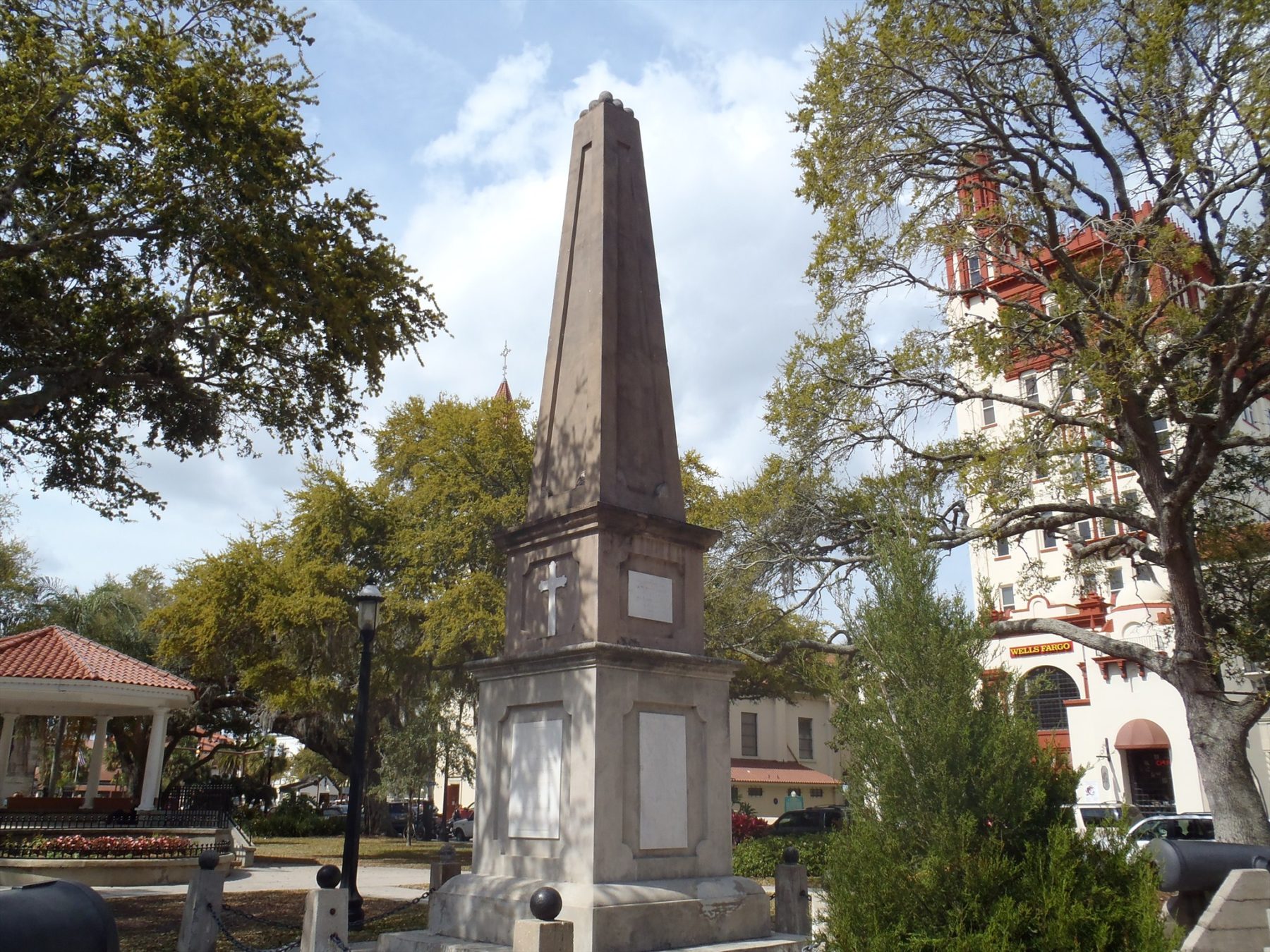
In America’s oldest city, a debate over history is looming, as residents and elected officials join the anguished reckoning over race that is now gripping much of the country.
At the center of the debate in St. Augustine is a monument, located in the city’s historic central plaza, memorializing dozens of the city’s sons who died fighting for the Confederacy during the Civil War.
The towering structure, which was built in 1879, takes the form of an obelisk jutting into a canopy of oak trees. Inscribed on it are the names of the fallen soldiers.
The Rev. Ron Rawls, a pastor at St. Paul’s African Methodist Episcopal Church, calls the monument disrespectful and wants it removed. The City Commission is expected to decide whether to heed that call on Monday.
“You might call it a memorial, but you’re honoring and glorifying people who fought to preserve slavery when our country wanted to go into a better and humane direction,” Rawls said. “The Confederacy should not be glorified.”
Mayor Tracy Upchurch agrees that it is time for the memorial to go, in the wake of demonstrations across the country to protest the death of a Black man in the custody of a white police officer in Minneapolis.
“The world changed the day George Floyd died. We’re at a pivot point in our nation,” said Upchurch, a former state legislator who teaches law and history at Flagler College.
In the weeks after Floyd’s death protesters by the hundreds have swarmed the historic city. The memorial has been a key focus of the outrage.
St. Augustine was founded by Spanish conquistadors in 1565 and touts itself as the oldest continuously functioning community in the United States.
Its central plaza, the Plaza de la Constitucion, was once the main focal point in town because it flanked the city’s churches and government center. It remains a draw to visitors.
Over the years, the plaza has become home to public monuments, including the Confederate memorial. The plaza features a piece of public art commemorating the “foot soldiers” of the civil rights movement. A separate installation commemorates the 1964 beatings of civil rights activists, including Andrew Young, who would later become mayor of Atlanta and the U.S. ambassador to the United Nations.
The Confederate memorial has been the subject of hand-wringing before, especially after a young white supremacist, Dylann Roof, opened fire on African American churchgoers in South Carolina three years ago.
In the aftermath of that violence, there was talk of moving the memorial but city leaders declined. Instead, they installed plaques at the foot of the monument that sought to put the memorial in the context of slavery and oppression.
One of the plaques notes how Confederate imagery has been used as symbols of resistance to civil rights.
The memorial itself is not adorned with any banners of the secessionist South.
Nevertheless, the memorial has been a source of division in the community, as is a nearby monument and burial place of Confederate Gen. William Wing Loring, which is out of the legal purview of the city because it is located on state property.
Jill Pacetti, whose family has roots in St. Augustine dating back nearly 250 years, is urging the divided commission to keep the memorial in its place.
“I can sympathize with people who take offense at the Confederacy. I’m not saying that their emotions are wrong,” Pacetti said.
“It’s not a monument, it’s a memorial to men from our city who went to war and never returned,” she said, noting that one of the men whose name appears on the structure, Eusebio Pacetti, was a distant cousin.
“We’d be losing a piece of history that’s been part of the landscape of our plaza for a very long time,” she said.
Mayor Upchurch said the memorial should be moved — not destroyed — and wants it relocated to a cemetery or on private property. But exactly where won’t be formally discussed, he said, until a decision’s been made on whether to remove it from its highly visible perch.
___
Republished with permission of the Associated Press.




2 comments
jerry dycus
June 22, 2020 at 2:16 pm
Let’s be clear it is a monument by made by terrorists for traitors as a warning to blacks they are scared of and can’t stand to see blacks do better than they do.
So much for white supremacist.
A truly superior person would feel sorry for inferior people and help them up, not keep them down.
Only an inferior person would be threaten by them.
jon
June 23, 2020 at 3:10 pm
The tearing down of these monuments is the first step to tearing down America… Those in the power base (elected officials) that stand by and do nothing are complicit and will be savagely ridiculed through all of history or worse!
Comments are closed.